Metro

The public transport in Sofia consists of a comprehensive network of bus, trolleybus, tram and metro lines. It is overseen by the Sofia Urban Mobility Center, a municipal enterprise responsible for route planning, scheduling, fare collection and ticket inspection. It also pays the various transport operators for their service on a per-kilometer basis. Sofia is the only city in Bulgaria that operates the four modes of public transport. [1]
As of 2023, public transport in Sofia is operated by 3 municipal and 1 private company:




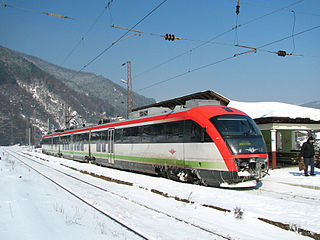
Transport in Bulgaria is dominated by road transport. As of 2024, the country had 879 kilometers of highways and another 117 km under construction. The total length of the network is almost 40,000 km, divided nearly in half between the national and the municipal road network. In addition, there are 57,000 km of streets. Buses play a significant role in long-distance public transport, coaches are operated by private companies. The capital Sofia has three major national bus terminals, the Central, the Western and the Southern Terminals.

Public transport in Istanbul comprises a bus network, various rail systems, funiculars, and maritime services to serve the more than 15 million inhabitants of the city spread over an area of 5,712 km2.
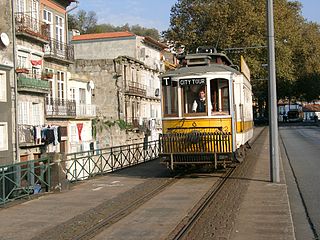
STCP is the public transport company that runs the bus and tram service in Greater Porto, Portugal. Created in 1946, it took over the Porto tram system from its privately owned predecessor and continues to operate it today, but the formerly large tram system now has only three lines, which are heritage tram lines, and the STCP network is now mostly bus service. STCP does not operate the city's light rail system, Porto Metro, but owns 25% of it. It is a public company controlled by a board responsible to the central government and had about 1,500 employees in 2009. STCP operates 83 bus routes – of which 11 are late-night-only routes – and the bus service covers 539 km of routes.
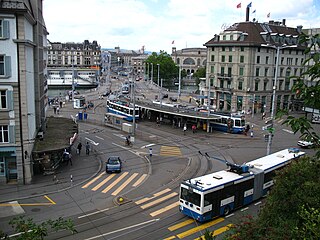
Verkehrsbetriebe Zürich (VBZ) is a public transport operator in the Swiss city of Zürich, and is wholly owned by the city. Previously known as the Städtische Strassenbahn Zürich (StStZ), the organisation was founded in 1896 and adopted its current name in 1950.

Metro Tasmania, commonly called Metro, a Tasmanian Government business enterprise, is the largest bus operator in the state of Tasmania, Australia, with operations in three of the four largest urban centres of Hobart, Launceston, and Burnie. Urban services in Devonport are provided by a private operator, Kinetic. Services are provided by Metro under a range of urban and non-urban contracts with the Transport Commission, a division within the Department of State Growth.

AS Oslo Sporveier is a defunct municipal owned company responsible for public transport in Oslo, Norway. It was created in 1924 to take over the city's two private tram companies. In 1927 its started with bus transport, including from 1940 to 1968 trolleybuses. Since 1966 rapid transit and from 1985 water buses have also been operated by the company. It was split into two separate companies in 2006; Kollektivtransportproduksjon took over the operation while Oslo Public Transport Administration was responsible for buying the services, fare regulation and marketing. The latter merged into Ruter in 2008, when the Oslo Sporveier brand was discontinued.
Azienda Trasporti Milanesi S.p.A. is the municipal public transport company of Milan and 46 surrounding metropolitan municipalities. It operates 5 metro lines, 17 tram lines, 120 bus lines and 4 trolleybus lines, carrying about 776 million passengers in 2018.
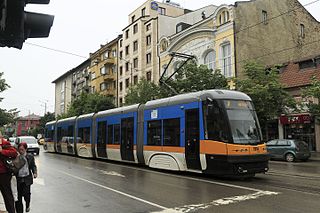
The Sofia tram network is a vital part of the public transportation system of Sofia, the capital of Bulgaria. It began operation on January 1, 1901. As of 2006, the tram system included approximately 308 kilometres of narrow and standard gauge one-way track. Most of the track is a narrow gauge, with standard gauge used on lines 20, 21, 22 and 23 and accounting for approximately 40 kilometres (25 mi) of the system's track length.

The Sofia trolleybus system forms part of the public transport network of Sofia, the capital city of Bulgaria.
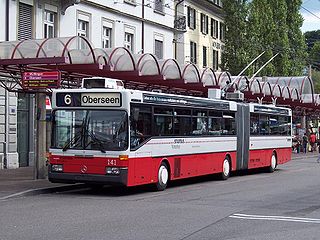
The Winterthur trolleybus system forms part of the public transport network that serves Winterthur, in the canton of Zürich, Switzerland.

Trolleybuses in São Paulo provide a portion of the public transport service in Greater São Paulo, in the state of São Paulo, Brazil, with two independent trolleybus systems. The SPTrans system opened in 1949 and serves the city of São Paulo, while the Empresa Metropolitana de Transportes Urbanos de São Paulo (EMTU) system opened in 1988 and serves suburban areas to the southeast of the city proper. Worldwide, São Paulo is the only metropolitan area possessing two independent trolleybus systems.
Azienda Napoletana Mobilità SpA, more commonly known simply as ANM, is a municipally controlled public company that is the primary provider of urban public transportation in the city of Naples, Italy, and also provides a portion of the surface transit service in surrounding municipalities. In addition to a network of tram, trolleybus and motorbus routes, ANM operates the Naples Metro system and four urban funiculars. The metro system and funiculars were operated by a different company from 2001 to 2013, when they again became part of ANM.

The trolleybus system forms part of the public transport network of Varna, the third most populous city in Bulgaria.

The Ruse trolleybus system is a part of the public transport network of the city and municipality of Ruse, the fifth most populous in Bulgaria. Opened in 1988, the system currently has seven lines and forms the backbone of the city's transport system. Its approximate length is 63 km and has been designed to work with 600V DC electricity, although not all infrastructure is actively in use. Various models of trolleybuses have been operated in Ruse during the network's operation.

The Sofia public bus system forms part of the public transport network of Sofia, the capital city of Bulgaria.

The Lugano tramway network was part of the public transport network of Lugano, in the canton of Ticino, Switzerland, for over half a century. Opened in 1896, the network was progressively replaced by the Lugano trolleybus system by 1959, with one independent line surviving until 1964.

Kyiv, the capital of Ukraine, has an extensive and rapidly developing transportation infrastructure serving local public needs and facilitating external passenger and cargo traffic.
The Rosario Tramway was a planned mass transit tramway network in Rosario, Argentina. Nevertheless, the project never surpassed the bidding process stages. The project was assessed by Ferrocarrils de la Generalitat Valenciana and was largely inspired by the network the company runs in Valencia, though at one point a metro system was envisioned. The municipal and provincial governments undertaken discussions with the Industrial and Commercial Bank of China for financing the project, as well as Siemens to provide the rolling stock. Once the project was completed, it would be the first time trams have run in the city on a mass scale since the closure of the city's tramway network in 1963, which had reached a maximum extension of 192 km.
The following outline is provided as an overview of and topical guide to public transport:

The Lviv trolleybus is a trolleybus system in Lviv, Ukraine. The trolleybus network is operated by Lvivelectrotrans - a municipal enterprise, that is the operator of trams and trolleybuses in the city. LET is owned by the Lviv city council. The length of the contact network is 136 km (01.2023), and the length of the route network is 169 km (01.2021). As of 2021, 24,678,300 paid passengers used trams and trolleybuses. In 2021, trolleybuses performed 3.29 million kilometers of transportation work (vehicle-km). In January 2024, 900,744 passengers were transported by trolleybus routes.
![]() Media related to Transport in Sofia at Wikimedia Commons
Media related to Transport in Sofia at Wikimedia Commons